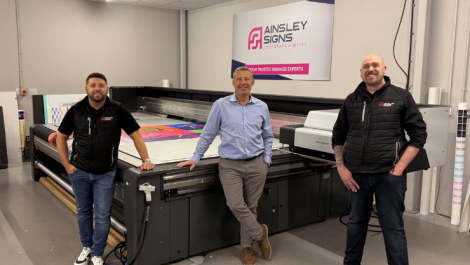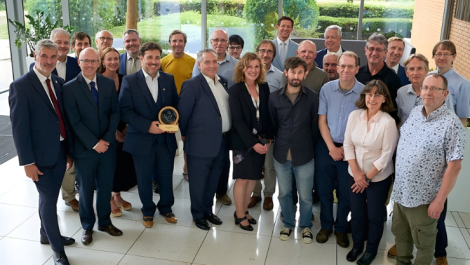Konica Minolta will unveil a new high-speed UV inkjet press AccurioJet 60000 and the AccurioPress C84hc in Hall 8b at drupa 2024, which are said to ‘shape the future of commercial printing, label printing, packaging, and industrial print.’
The high-speed UV inkjet press, AccurioJet 60000, is explained to be capable of producing 6000 sheets per hour along with duplex printing capabilities. The press produces high image quality and reproduction stability across a range of media, taking advantage of Konica Minolta’s inline sensors and a spectrophotometer to automatically monitor printing conditions.
Visitors to Konica Minolta at drupa will also be the first to see the AccurioPress C84hc, which uses high chroma toner. Free from the restrictions imposed by the colour gamut of ordinary toner, prints are said to be more consistent across bright and vivid colours.
The company will also introduce Myiro colour management tools for graphics arts applications. Developed by Konica Minolta’s Sensing Business Unit, these tools include spectrophotometers for colour management and high-speed auto scanning.
Konica will be joined on the stand by MGI (MGI Digital Printing Systems) showing its new JetSeal and inline die cutter, as well as launching an advanced version of its AccurioPro Colour Manager software suite.
Also joining Konica Minolta will be Industrial Inkjet (IIJ), a specialist in bespoke inkjet customisation, which exclusively uses Konica Minolta print heads in its products; and Plockmatic, a supplier of finishing options, as well as Acco and Fiery.
Konica Minolta will also be running fully automated production lines driven by artificial intelligence, and will show the use of robotics that includes the premiere of a Cobot arm.
Jon Hiscock, head of production and industrial print at Konica Minolta (UK), stated, ‘As a major player in digital production printing it is our mission to promote and support the shift from analogue to digital print. In doing so, we will build a world where high-value-added printed materials are created efficiently with minimal environmental impact.’





